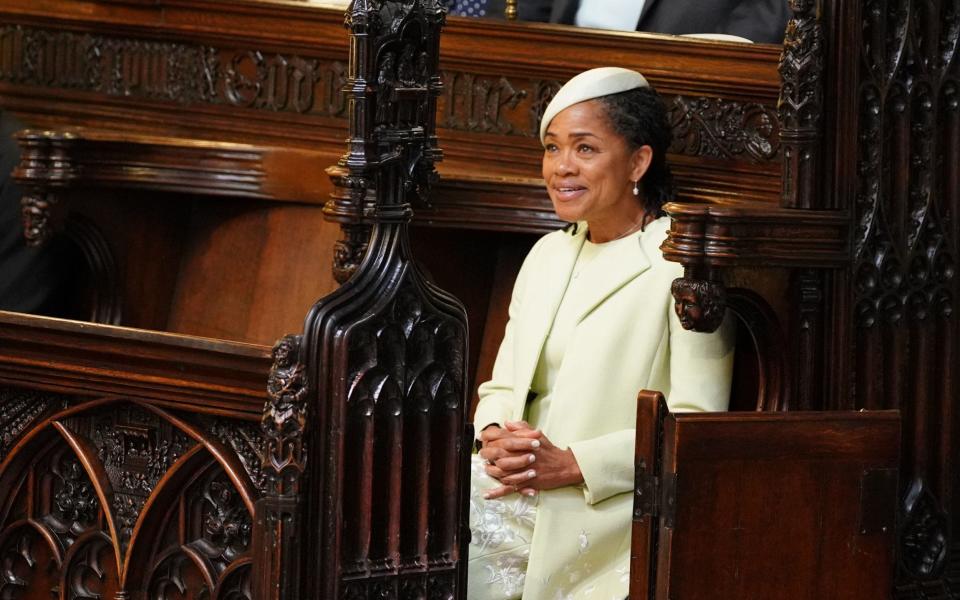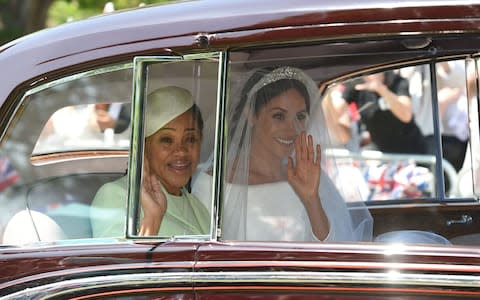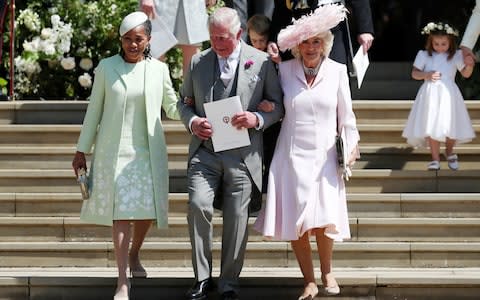Oh Doria: why was the mother-of-the-bride left looking lonely?

As a picture of maternal pride and emotion, Doria Ragland had it all. Taking a few deep breaths and holding back tears as she sat in St George’s Chapel awaiting the arrival of her daughter, the bride, only the hardest-hearted viewers could feel anything but goosebump-inducing empathy.
Stunning, in an elegant, pistachio-green Oscar de la Renta outfit with matching hat by British milliner Stephen Jones, her look was completed with a beam of undistilled joy as Meghan Markle at last made her entrance. As the mother-of-the-bride, Ragland had everything. Everything, that is, except company.
For the duration of the ceremony, she sat alone, the only member of the bride’s family in attendance. And it made for heartrending viewing.
Where was the bevvy of gushing friends and relatives who would usually bolster the mother-of-the-bride on her daughter’s wedding day? Where was the sense that this woman was in some ways more key to proceedings than anyone in the chapel except the bride and groom themselves? Why did she look so… lonely?

For, amid a congregation dominated by the groom’s (royal) family, Ragland cut an isolated figure. And it did not go unnoticed by those at home.
“Oh, Doria!” viewers cried, to themselves and each other, an impotent expression of an inchoate desire to reach out and hug her through the television screen. Prince Harry was not immune either – seen leaning forward to try and catch her eye, to offer her, perhaps, some reassurance.
On social media, meanwhile, the sense of solidarity with the elegantly understated woman who brought “our” bride into the world was clear, and emanated from both sides of the Atlantic.
2018.
The look of a mom but also an American black mother who just witnessed her daughter become Duchess of Sussex. �� So happy for Doria Ragland. #HarryandMeghan#MeghanMarkle
The world will change even if there are those who don't want it to. ❤ pic.twitter.com/8U1QbbW7Hb— nicki �� (@nickiknowsnada) May 19, 2018
“The look of a mom but also an American black mother who just witnessed her daughter become Duchess of Sussex,” observed one US viewer on Twitter.
“Doria Ragland was my highlight. She handled an intimidating and lonely moment with such poise and grace,” wrote another.
Much has been made of the symbolic significance of the British Royal family taking into its ranks the daughter of a black American.

“A proud black woman with dreadlocks who will be gloriously central to the day,” was how television broadcaster June Sarpong described her in the Telegraph today. And yet, somehow, Ragland felt marginalised, albeit through the fault of no-one in particular.
Redemption, if it came, was in her exit from the chapel with the Prince of Wales and the Duchess of Cornwall, her daughter’s new parents-in-law. Here, at least, we got our longed-for image of two families - one white, one biracial - truly coming together as one.

Because a marriage isn’t just about the union of two people. For better or worse, it’s also the joining of two tribes. And if we’re to believe in this magical moment of fusion, this much-trumpeted breaking down of barriers, we need to make room for Ragland’s new role: as mother-of-the-bride today, and, who knows, maternal grandmother some day soon.
The Royal family have come a long way. Now they must ensure that their newest member’s mother is given the place she deserves.

